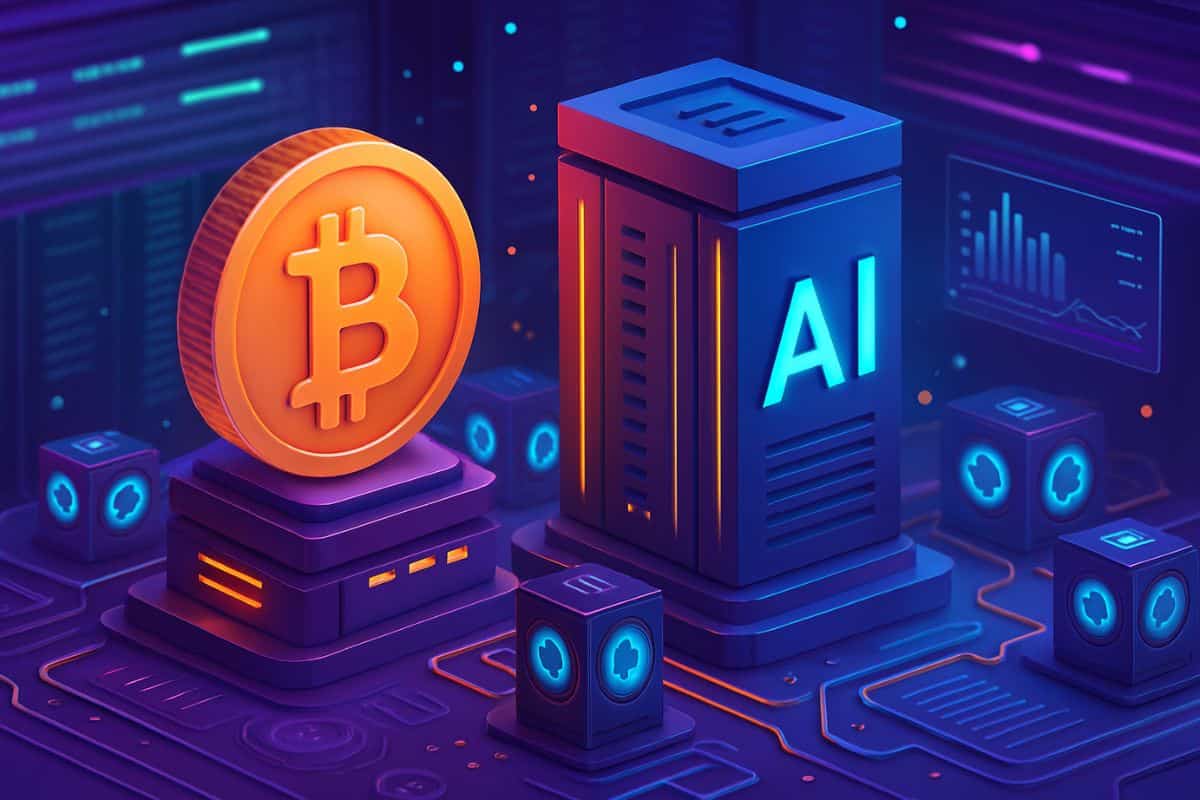The latest Bitcoin halving sliced those block rewards right in half. It squeezed revenues all over the Bitcoin mining world. Big operators now hunt for ways to steady their cash flow.
Table of Contents
More and more, they lease out their energy setups to AI outfits and high-performance computing folks. This setup is no pipe dream. It shows up in multiyear deals already.
Back in September, Cipher Mining locked in a 168-megawatt pact with Fluidstack. That is an AI cloud outfit. The agreement lasts ten years. It is worth three billion dollars. Google chipped in financing to the tune of one point four billion. They grabbed a five percent stake in Cipher too.
This deal lets Cipher hang onto its sites. They turn some power into steady AI income.
Another miner based in the United States, TeraWulf, took a similar route. At its Lake Mariner site, it announced hosting agreements that commit over 200 megawatts to AI workloads.
According to analysts, the deal could be worth more than $3.7 billion.
Bitcoin Mining – Miner Balance Sheet-Changing Contracts
These companies are seeing their financial side shift around. Miner stocks have always moved pretty much in lockstep with Bitcoin prices.
Now there are these new long-term deals that offer investors a whole different kind of risk to think about. Steady payments in dollars from AI clients could cut down on how much miner shares swing with Bitcoin ups and downs.
Take Iren for instance. It’s an outfit based in Australia. They just grew their AI cloud side by grabbing over 12,000 GPUs. The firm figures on pulling in 500 million bucks a year from AI by early 2026.
Folks at Arete started covering Iren along with Riot Platforms and Cipher Mining. They gave buy ratings. The steady income from locked-in AI contracts is what they point to as the big push.
CoreWeave and Core Scientific make the case even clearer. CoreWeave used to mine Ethereum. Then it switched over to hosting with GPUs. Come 2025, it bought Core Scientific for 9 billion dollars.
That move locked in its role supplying compute power to AI outfits. It left token mining behind completely.
The Reasons Behind the Unique AI Shift
Getting into AI hosting aint just some side diversification for miners. It really makes them rethink how they run things. BTC mining is different, you know.
AI folks want those strict service level agreements. Data centers have to provide redundancy and good cooling efficiency. Plus long-term maintenance stuff. In real life, that shifts capital away from quick ASIC buys to upgrading infrastructure for denser workloads.
Then theres the whole allocation issue. Every megawatt you put into AI hosting means you cant use it for BTC mining. Operators gotta balance the steady revenue from contracts against the chance of a Bitcoin price boom.
Hash price to Lease Price Conversion
The mining world has always stuck pretty close to this thing called hashprice. You know, thats the dollar amount you get for one terahash of computing power each day. Now though, people are starting to look at something else too.
Its like a lease price, basically the value from selling contracted power to outside clients. Over time, that lease price might end up mattering just as much in valuation models as the hash price does.
This whole change affects the bigger network in some ways. Miners might put more of their setup toward external hosting. If that happens, the networks hash rate growth could slow down a bit.
It might shake up how the pure miners compete with each other. Things like difficulty adjustments could feel the hit too. Still, those AI contracts bring in steady capital.
That stability might help some companies hang on during low Bitcoin price stretches. In the end, it stops the total hash rate from dropping off sharp.
A Changing Cycle for Capital Formation
The capital cycle in this sector is starting to shift. Things used to work one way. Expansions back then got financed right in the middle of bull markets.
High margins made it seem okay to snap up machines quick. Now its different. Multi-year AI contracts are stepping in as the solid base for pulling in capital. Even when markets are not so hot. That shakes up the whole pace of building out mining infrastructure.
Long term, AI does not wipe mining off the map. It just piles on another kind of economic activity right over the same setup. For investors, the equities of miners might not feel like those high-beta Bitcoin stand-ins anymore.
They could come across more as hybrid outfits. You know, the kind that blend income tied to commodities with revenue from locked-in service deals.
Source : cryptonews.com







